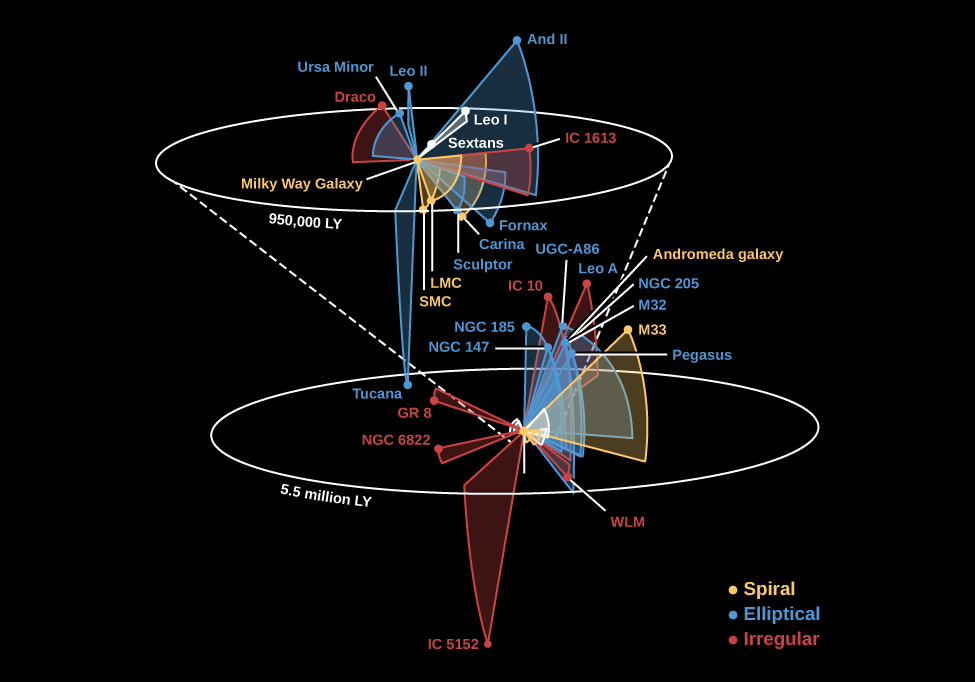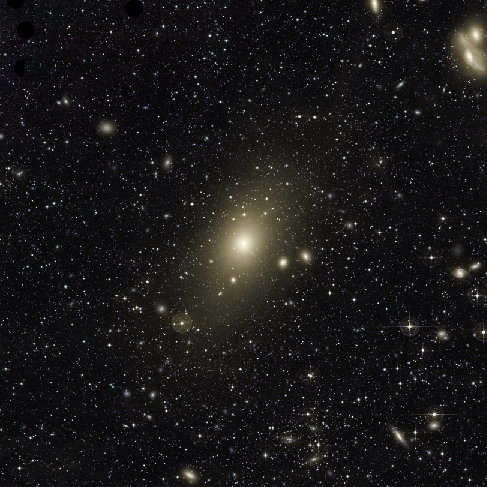| << Chapter < Page | Chapter >> Page > |
You can read more about the Sloan survey and its dramatic results. And check out this brief animation of a flight through the arrangement of the galaxies as revealed by the survey.
Several new dwarf galaxies have also been found near the Andromeda galaxy. Such dwarf galaxies are difficult to find because they typically contain relatively few stars, and it is hard to distinguish them from the foreground stars in our own Milky Way.
[link] is a rough sketch showing where the brighter members of the Local Group are located. The average of the motions of all the galaxies in the Local Group indicates that its total mass is about 4 × 10 12 M Sun , and at least half of this mass is contained in the two giant spirals—the Andromeda galaxy and the Milky Way Galaxy . And bear in mind that a substantial amount of the mass in the Local Group is in the form of dark matter.

Small galaxy groups like ours are hard to notice at larger distances. However, there are much more substantial groups called galaxy clusters that are easier to spot even many millions of light-years away. Such clusters are described as poor or rich depending on how many galaxies they contain. Rich clusters have thousands or even tens of thousands of galaxies, although many of the galaxies are quite faint and hard to detect.
The nearest moderately rich galaxy cluster is called the Virgo Cluster , after the constellation in which it is seen. It is about 50 million light-years away and contains thousands of members, of which a few are shown in [link] . The giant elliptical (and very active) galaxy M87, which you came to know and love in the chapter on Active Galaxies, Quasars, and Supermassive Black Holes , belongs to the Virgo Cluster.

A good example of a cluster that is much larger than the Virgo complex is the Coma cluster , with a diameter of at least 10 million light-years ( [link] ). Some 250 to 300 million light-years distant, this cluster is centered on two giant ellipticals whose luminosities equal about 400 billion Suns each. Thousands of galaxies have been observed in Coma, but the galaxies we see are almost certainly only part of what is really there. Dwarf galaxies are too faint to be seen at the distance of Coma, but we expect they are part of this cluster just as they are part of nearer ones. If so, then Coma likely contains tens of thousands of galaxies. The total mass of this cluster is about 4 × 10 15 M Sun (enough mass to make 4 million billion stars like the Sun).

Notification Switch
Would you like to follow the 'Astronomy' conversation and receive update notifications?